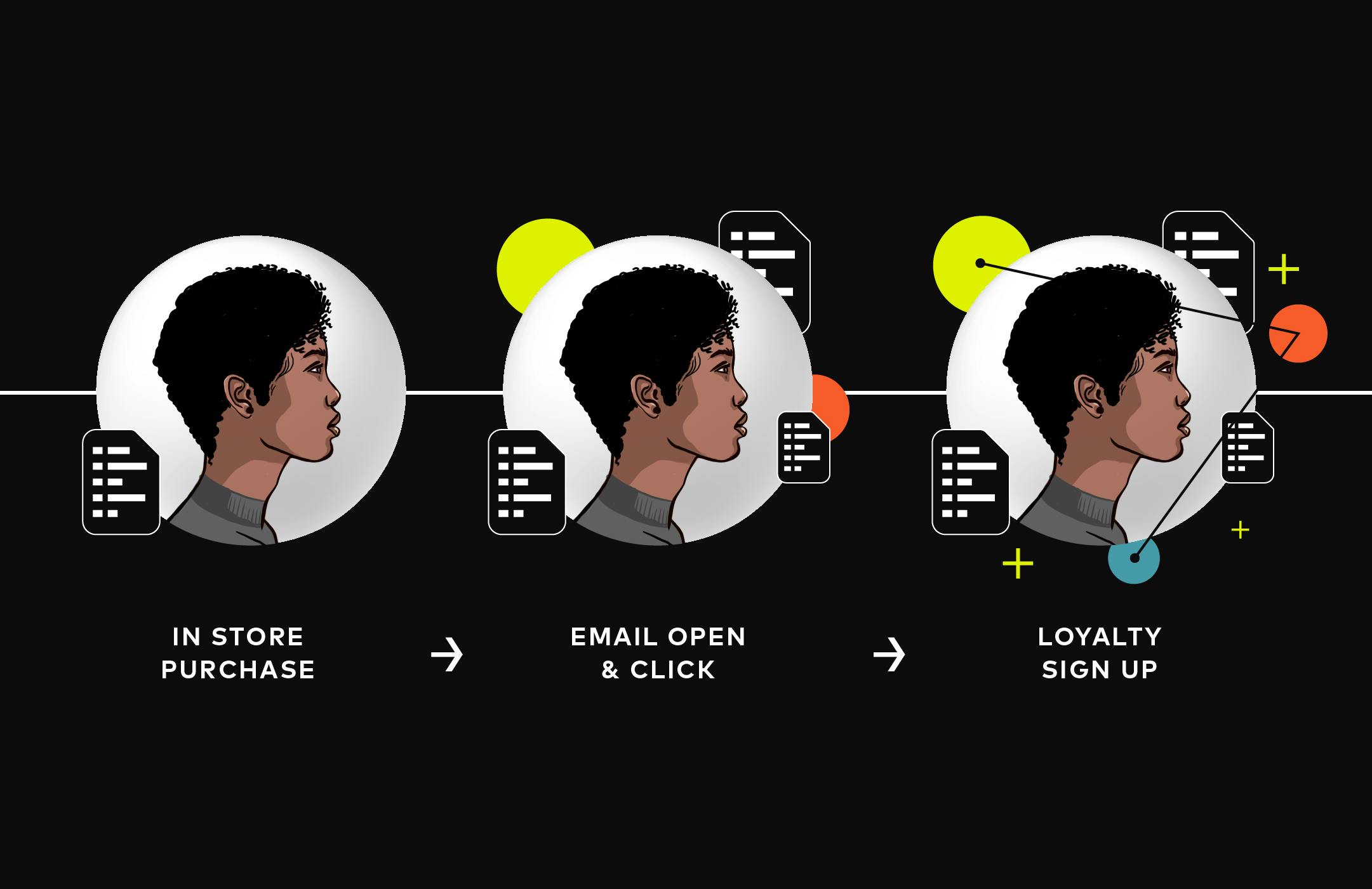Knowing your customers is hard. They share data with you during nearly every interaction with your brand, and yet, the process of making sense of that data is riddled with complexity. Let me tell you a true story…
A young woman named Sarah walks into a clothing store with her mom, Gail. Gail is shopping for a dress for her great niece’s 4th birthday. At checkout, Gail uses her senior discount and Sarah gives her loyalty program number to earn points on her mom’s purchase. Forever after, Sarah receives marketing from the brand for its senior discounts and programs.
It’s easy to see how this happened. Sarah’s loyalty program number is the brand’s primary key for her identity. As Sarah’s identity gets associated with actions that aren’t hers, the brand infers incorrect preferences and sends her irrelevant communications.
Turns out, the longer a person shops with a brand, the more likely his or her identity, transactions, and preferences are to become confused. And that’s a shame because people who shop often and over long periods of time are typically the brand’s best and highest value customers – the ones the brand wants to do everything it can to satisfy and retain.
A Smarter Way to Understand Your Customers’ Identities
Today we’re thrilled to announce that Amperity has been granted our first patent for our machine learning-powered approach to managing customers’ identities, officially named: “Maintaining stable record identifiers in the presence of updated data records”. But what does this really mean and why should you care?
Most brands write rules to connect data. If the loyalty number matches across two records, then match them into a single profile. Or, if the email address matches, match them into a single profile.
Rules can be complex, but no matter how cleverly they’re crafted, the accuracy of their output degrades over time. Customers often act in unexpected ways (like sharing loyalty numbers, see above), typos are all too common, and identity markers like names, addresses, and email addresses change over time. We’ve seen cases where one loyalty record has dozens of associated email addresses, or a single email address has dozens of associated home addresses. Customer databases get murky, fast, even for new and agile brands.
Businesses that rely on understanding their customers to drive personalized experiences, and inform investments, need a smarter way.
At Amperity we use machine learning, not rules, to help brands understand who’s who across all their records, channels, and systems. And the best part: it gets smarter and more accurate over time. So how is that possible?
Patented Stable ID Technology
It all comes down to our identity resolution and Stable ID technology. It’s fairly simple, but because it’s an entirely new approach, we were granted this patent, and another (more on this soon), with four more pending.
This is how it works: Amperity ingests records from every system and proprietary algorithms assess every bit of customer information (name, phone number, email address, loyalty number, home address, transactions, and more) simultaneously, and form accurate clusters of records that belong to one individual. The clusters are assigned IDs.
The next time new data comes through the system (daily or more frequently), the whole process starts again. But this time the original clusters are compared to the newly formed clusters, and the ID that was assigned to the original cluster is kept stable, appending the new information to the profile. Without our Stable ID technology, in the case of any changes to existing clusters (enriched information, deleted records, etc.), a new ID would be assigned. This would destroy the brand’s ability to ensure an accurate view of that individual over time.
One of the most important elements in this approach is that a loyalty number or an email isn’t a proxy for a person’s identity, and as those pieces of data are added, removed, or changed, we’re able to keep a clear picture of who the real individual is.
That’s it. It’s simple, but the results are profound. Instead of painstakingly writing business rules that serve up inaccurate profiles at the outset and that degrade over time, smart machines do the work, so you can know and serve your customers now and in the future.
